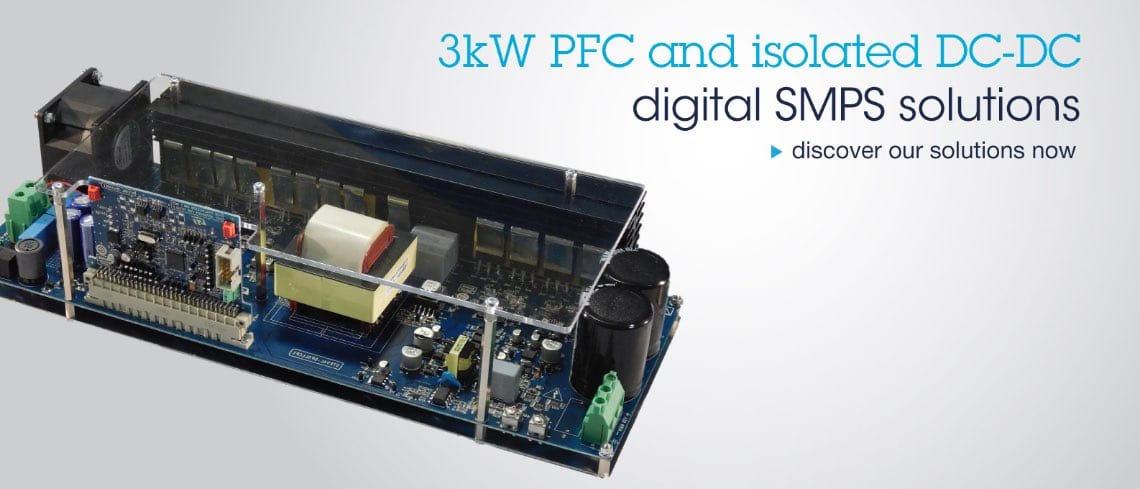Low power factor often means poor input current quality and inefficiencies, which generates cost burdens on the supplier, the consumer, or both. In AC systems, low power factor often comes from input current waveforms that suffer distortions, which is why several international electrical standards impose strict limits on the amount of harmonic content in a supply current, and why active or passive power factor correction is almost mandatory in some circumstances.
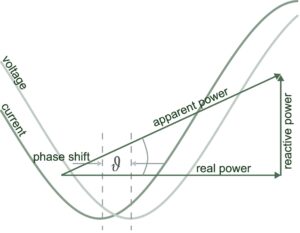
Power Factor in Ideal AC Systems
In sinusoidal AC systems, power factor is just the ratio between the real power an electrical system uses to produce work and the total apparent power, which includes real power and reactive power owing to reactive impedance generated by electrical and magnetic fields produced by loads. Reactive impedance causes the current waveform to lag the voltage waveform by a margin known as the phase shift angle, so we can express power factor as the cosine of the phase shift angle between voltage and current waveforms and conclude that power factor approaches the maximum value of one as the phase shift angle between the current and voltage waveforms decreases towards zero.
Harmonic Distortion in Real AC systems
In real AC supplies, the input current is often a complex signal carrying multiple harmonic components, and while the primary or fundamental harmonic (in phase with the circuit voltage) delivers real power, the other harmonics carry largely unusable energy.
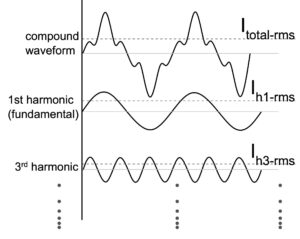
One, therefore, derives the power factor in real systems from the distortion factor, which is based on the sum of all the additional harmonics above the fundamental component, or the total harmonic distortion (THD). The role of PFC converters is, therefore, to passively adjust or actively rebuild input alternating current waveforms so that they are more closely aligned with voltage signals in terms of phase and shape, and free of undesirable harmonics.
PFC Converters in Today’s AC Systems
Power factor correction is based on switching devices (MOSFETs, IGBTs, etc.) that shape the input average current waveform by rapidly switching the current across a PFC inductor. A PFC controller compares circuit feedback and reference signals to determine the on and off durations of the switching device, which charges and discharges the corresponding PFC inductor. The oscillations in the instant current across the PFC inductor are timed to generate small net increases and decreases in the average inductor current, which the PFC controller manages over time to generate the desired sinusoidal waveform.
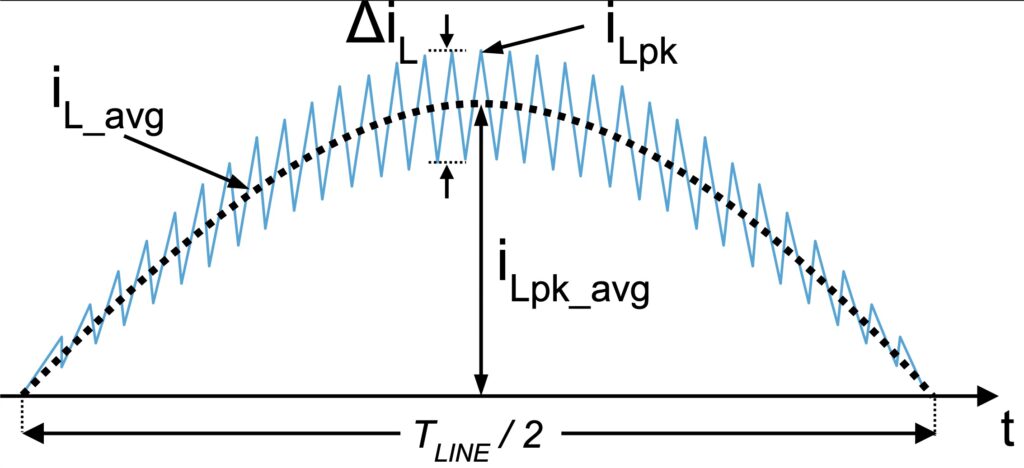
Interleaving in the PFC Stage
In high power applications, it is often beneficial to divide the PFC stage into two or more parallel PFC circuits, in a process known as interleaving. While interleaving increases the number of circuit components, the lower currents and reduced switching frequencies in each channel allow better overall power and heat management, higher efficiency, and can actually lower costs due to the significantly smaller inductors required.
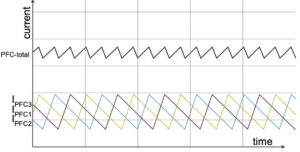
Interleaving is possible thanks to PFC controllers capable of generating separate PWM outputs that drive the individual phase channels. The firmware on these controllers will invariably include phase-shedding logic to limit the number of channels in usage when the power requirements are relatively low.
Advanced Digital PFC controllers in Your AC Systems
Digital PFC controllers for modern converters continue to evolve with increased embedded functionality substituting complex analog circuitry, and greater flexibility and operating ranges. Another key advantage lies in the programmable and configurable firmware residing on these controllers, which provide solution designers with the ability to implement their own logic and set application-specific parameters to align converter activity with particular design requirements.

The new STNRGPF01, for example, is able to manage loads as high as 3 kW from virtually any standard international input mains voltage. The controller implements comprehensive supply and load monitoring for highly responsive performance and safety management, as well as 3-channel interleaving to significantly improve overall converter efficiency and reduce the cost and size of the main inductors, which can be quite expensive in high power applications. Another IC from ST’s family of STNRG digital controllers is the recently released STNRGPF12, which can manage up to two-kilowatt loads with two-channel interleaving, and features digital inrush current control for superior management of the delicate startup phase when current spikes can damage circuit elements.
ST Evaluation boards and eDesignSuite in your Next AC Design
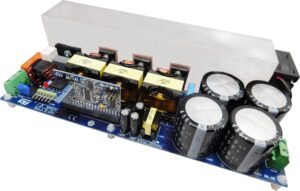
ST has a range of PFC and isolated DC-DC digital SMPS boards and kits that allow you to explore and evaluate fully featured solutions engineered for high-end industrial applications. The image of the STEVAL-IPFC01V1 3 kW three-channel interleaved PFC evaluation board immediately demonstrates its highly compact design with very high power density, while highlighting another important design aspect of high-end PFC converters, which is the inclusion of certain analog circuitry to ensure maximum control in high-frequency switching applications.
Indeed, the STEVAL-IPFC01V1 and the more recent STEVAL-IPFC12V1 feature analog sensing elements and comparators that feed instantaneous waveform information straight back into the STNRG digital controllers to allow cycle-by-cycle current regulation, even at the extremely high frequencies of the switching circuits.
Finally, ST offers a brilliant design tool called eDesignSuite on its website, which includes a section for PFC converters that can really help boost your productivity during the design phase. The software is not only able to develop a full solution with a bill of materials and schematics based on your design parameters, but it can also generate custom firmware that you can then upload onto your STNRG digital PFC controller to address your specific application requirements.
Andrew Lastrina, the author of this blog post, is ST’s Technical Communications Manager for System Research and Applications. We thank him for his contribution and expertise.
